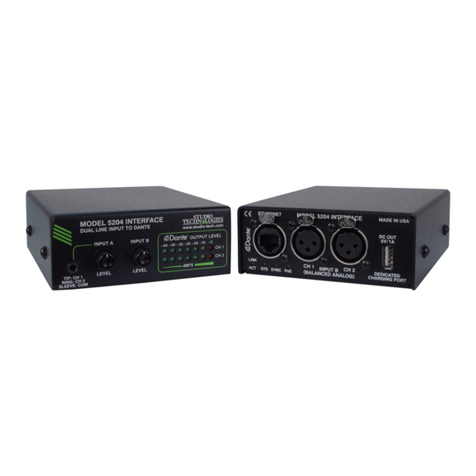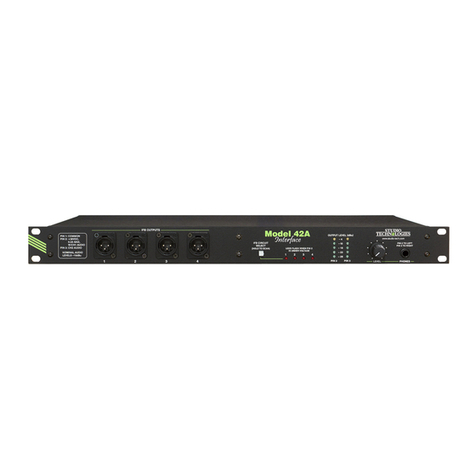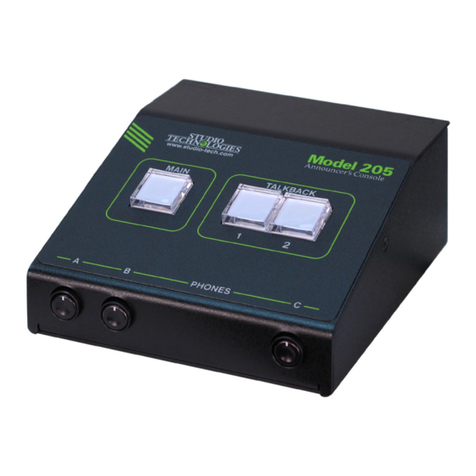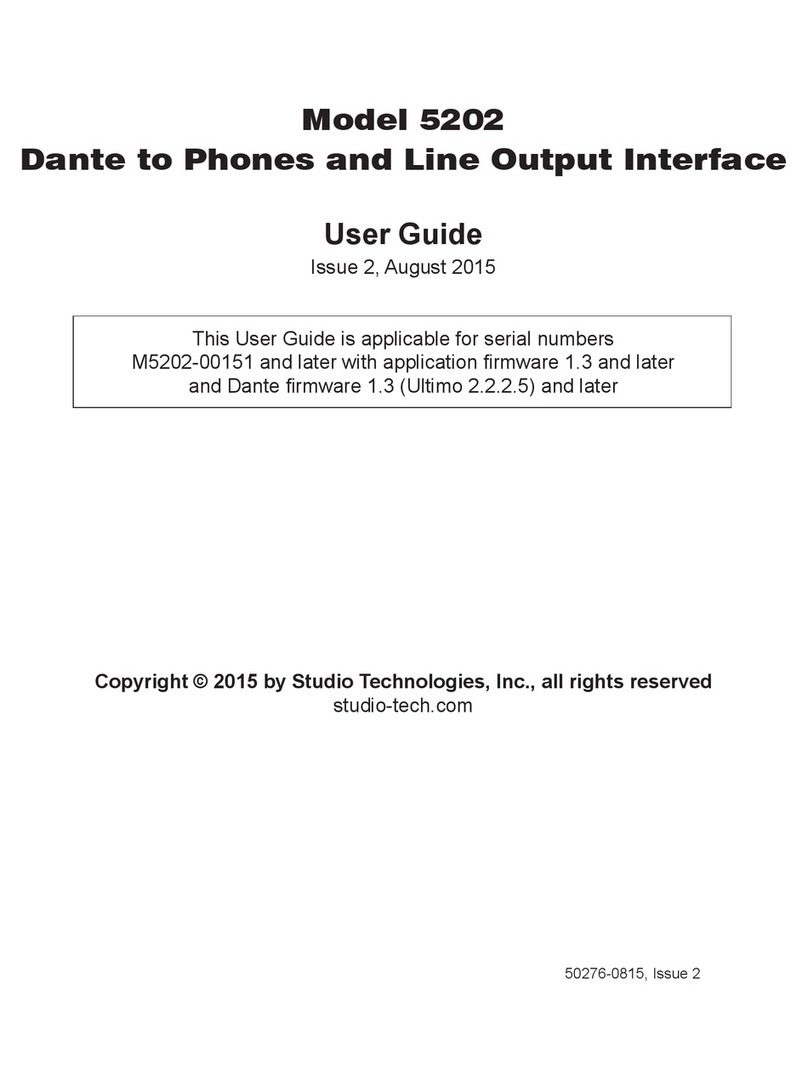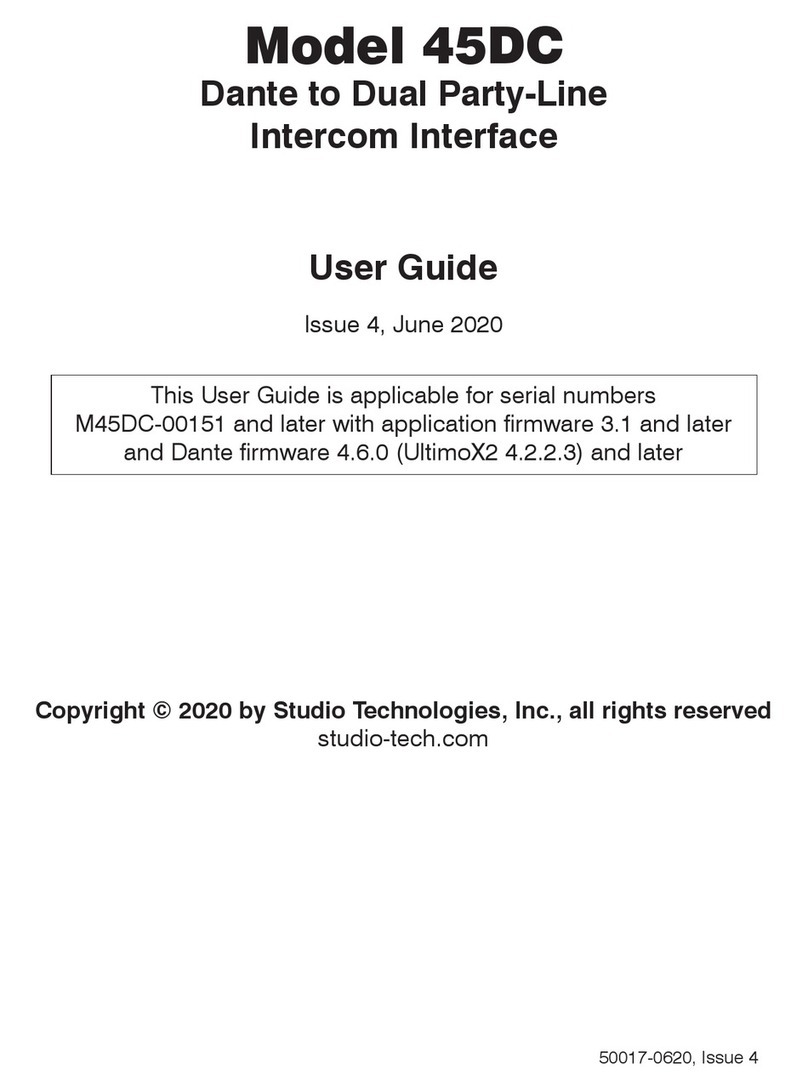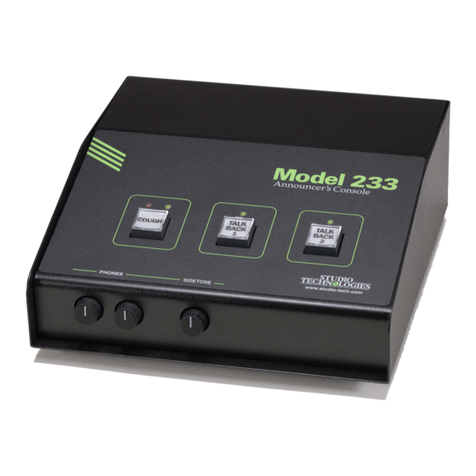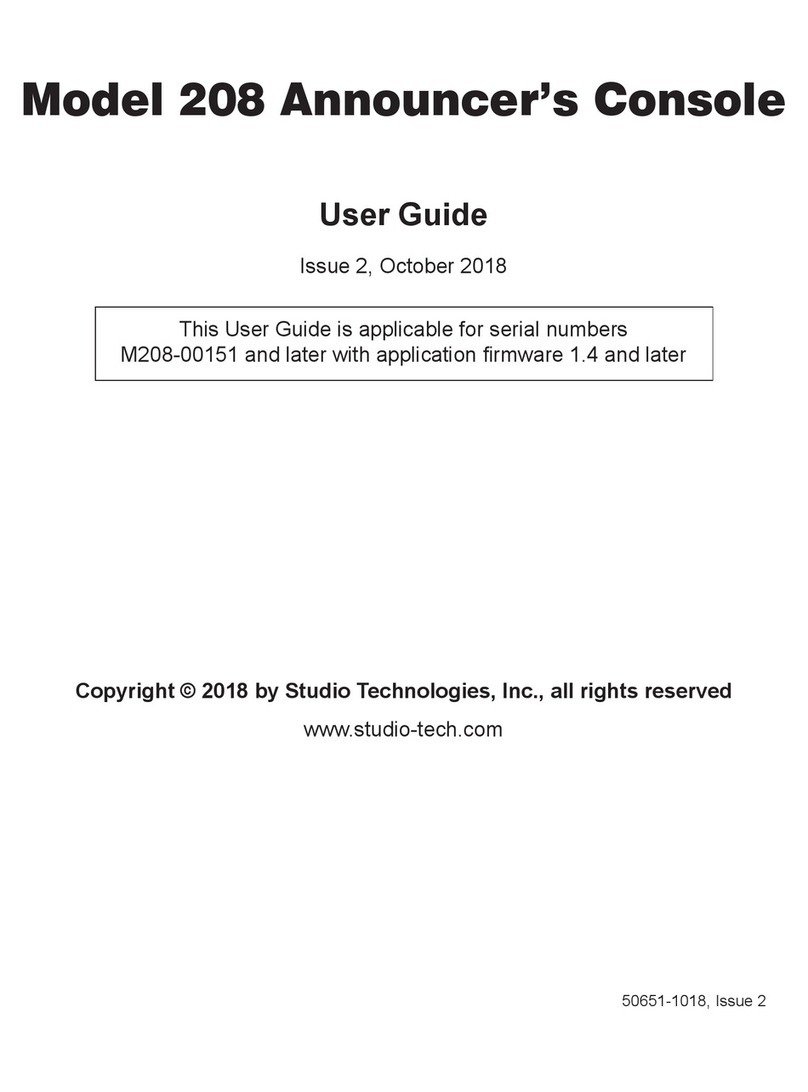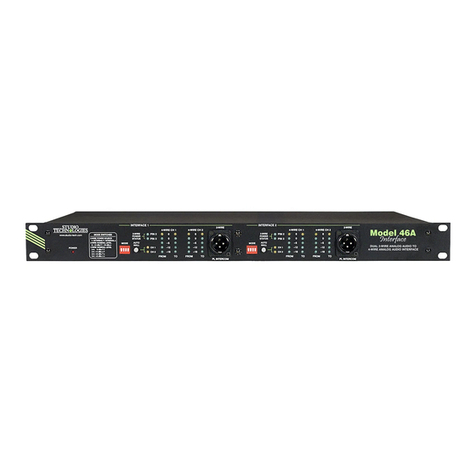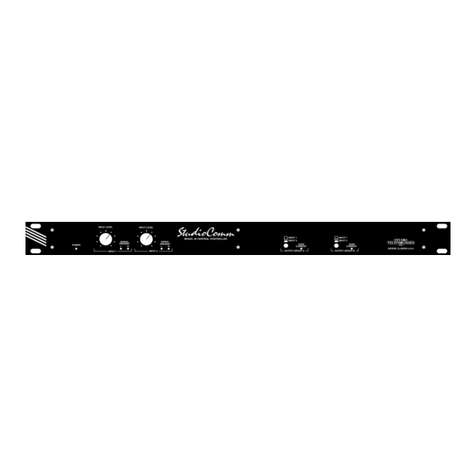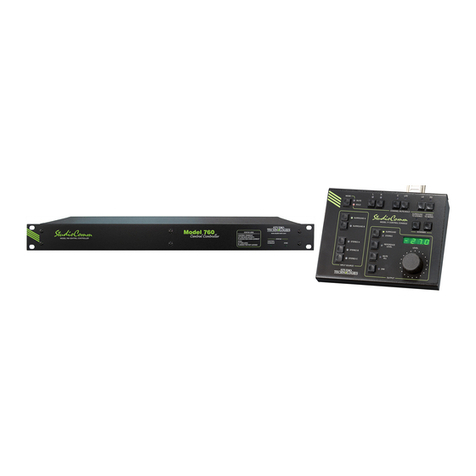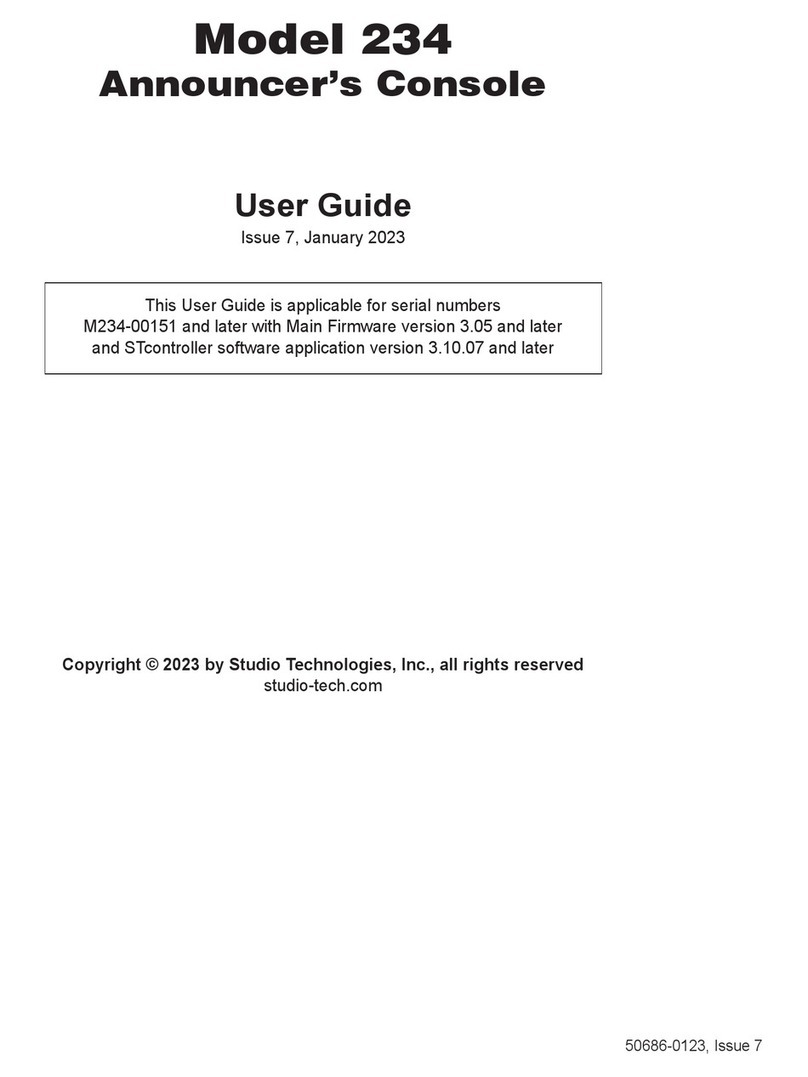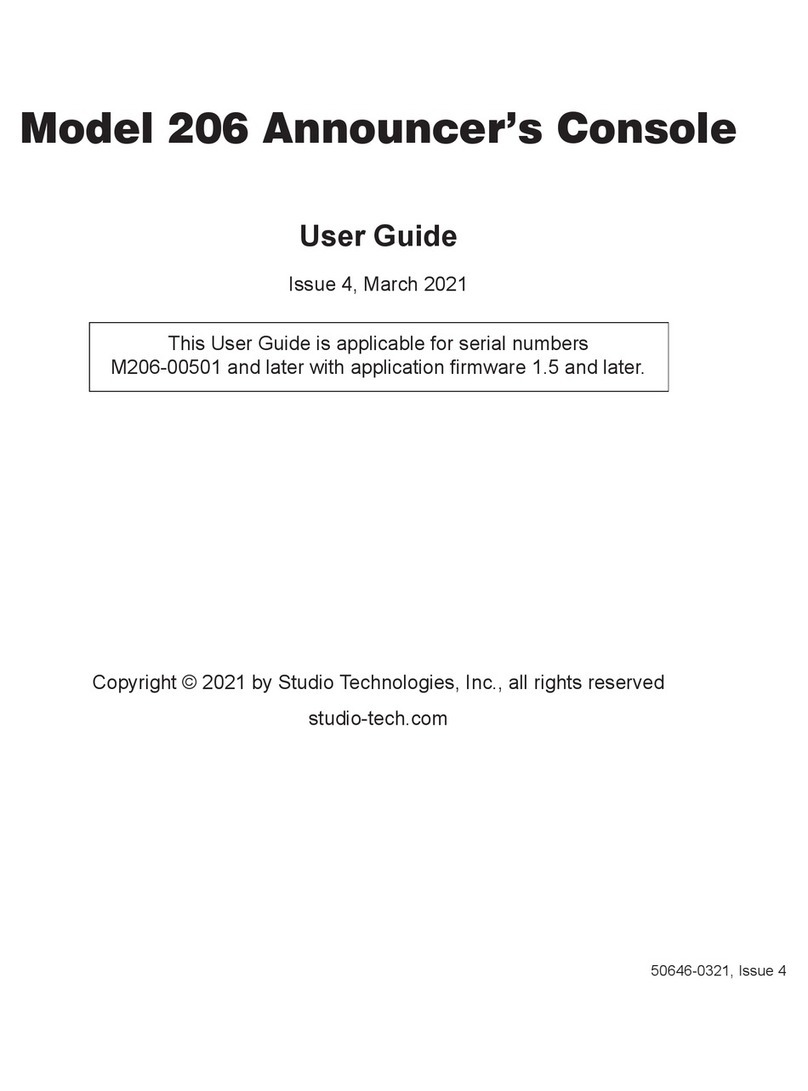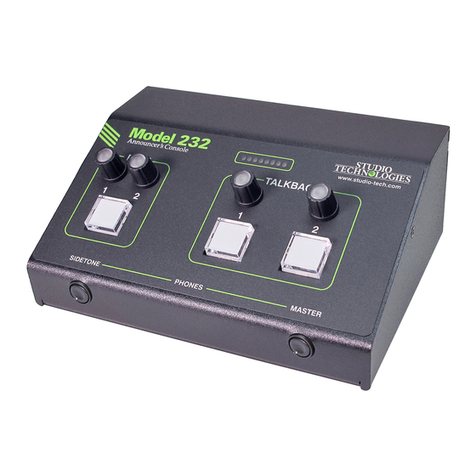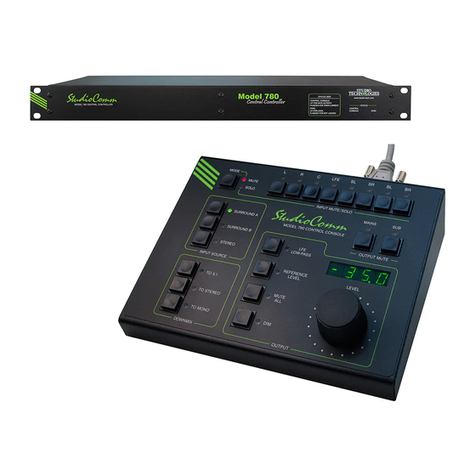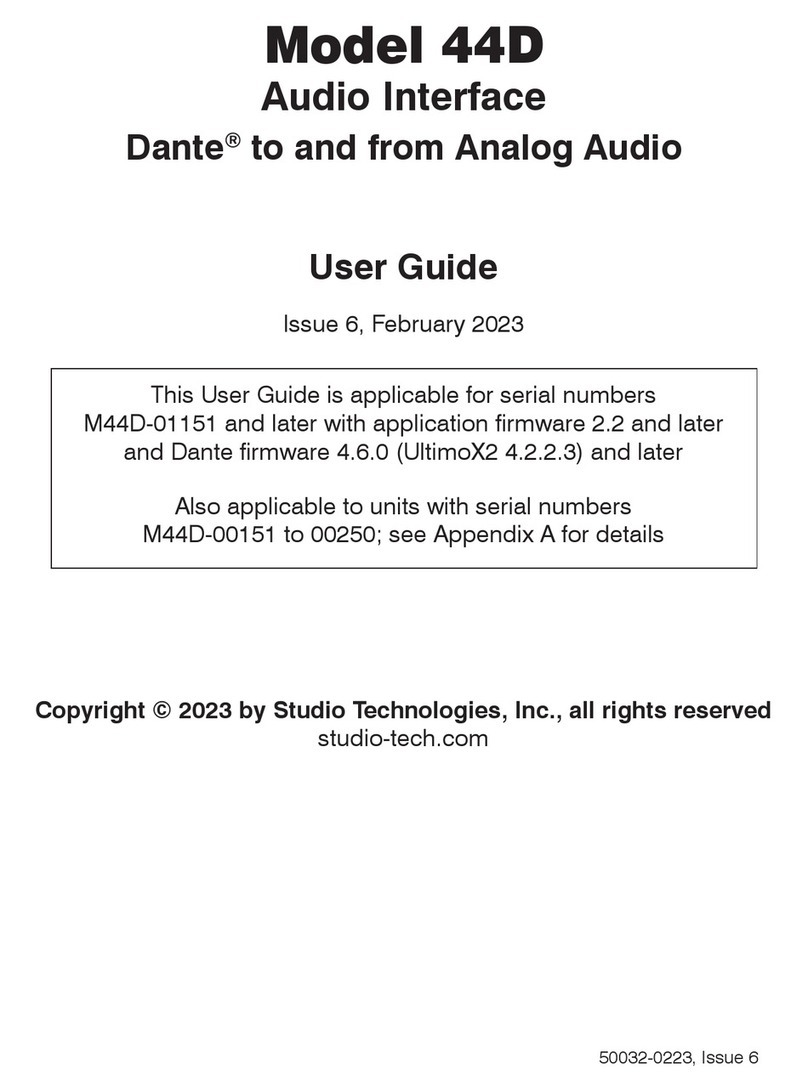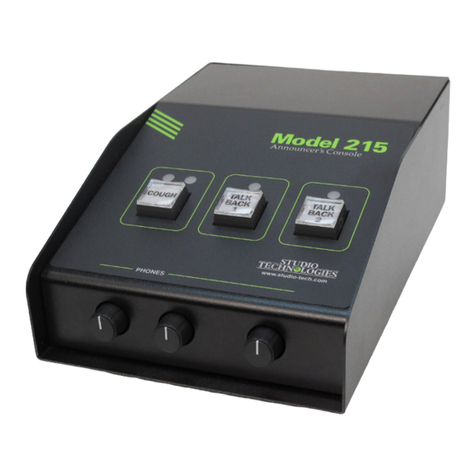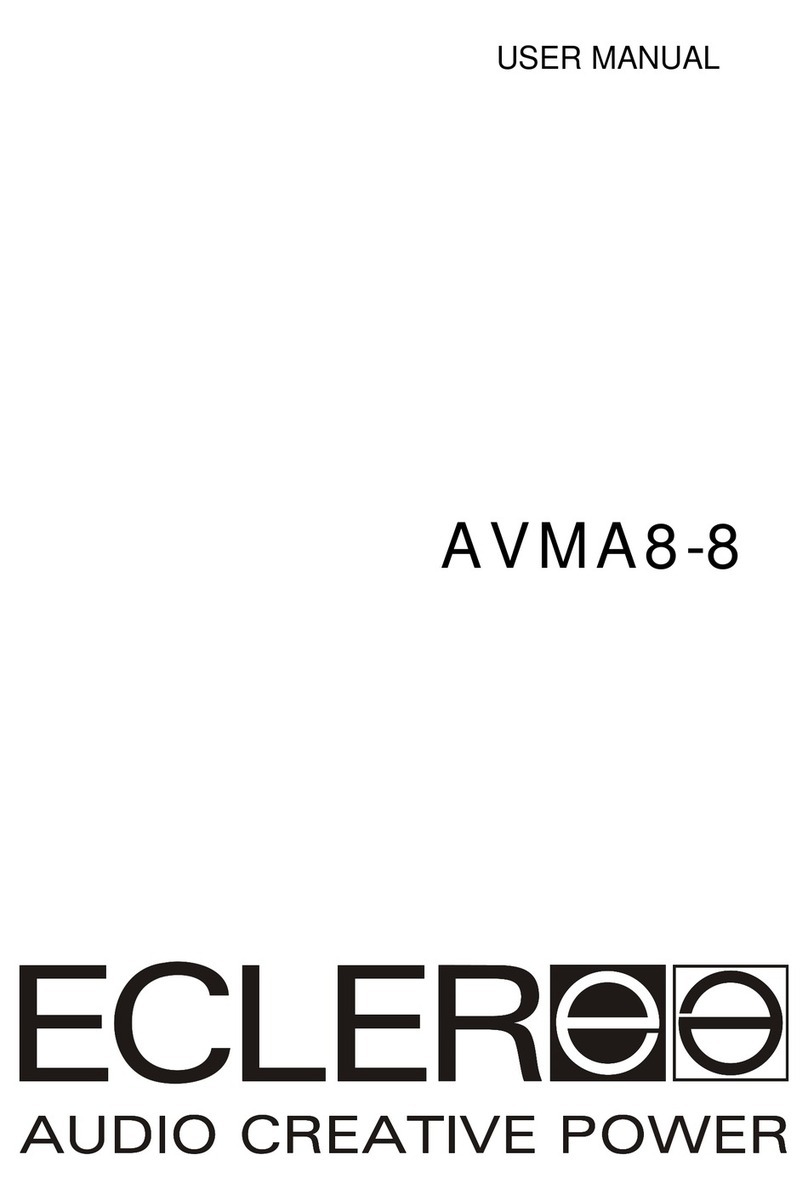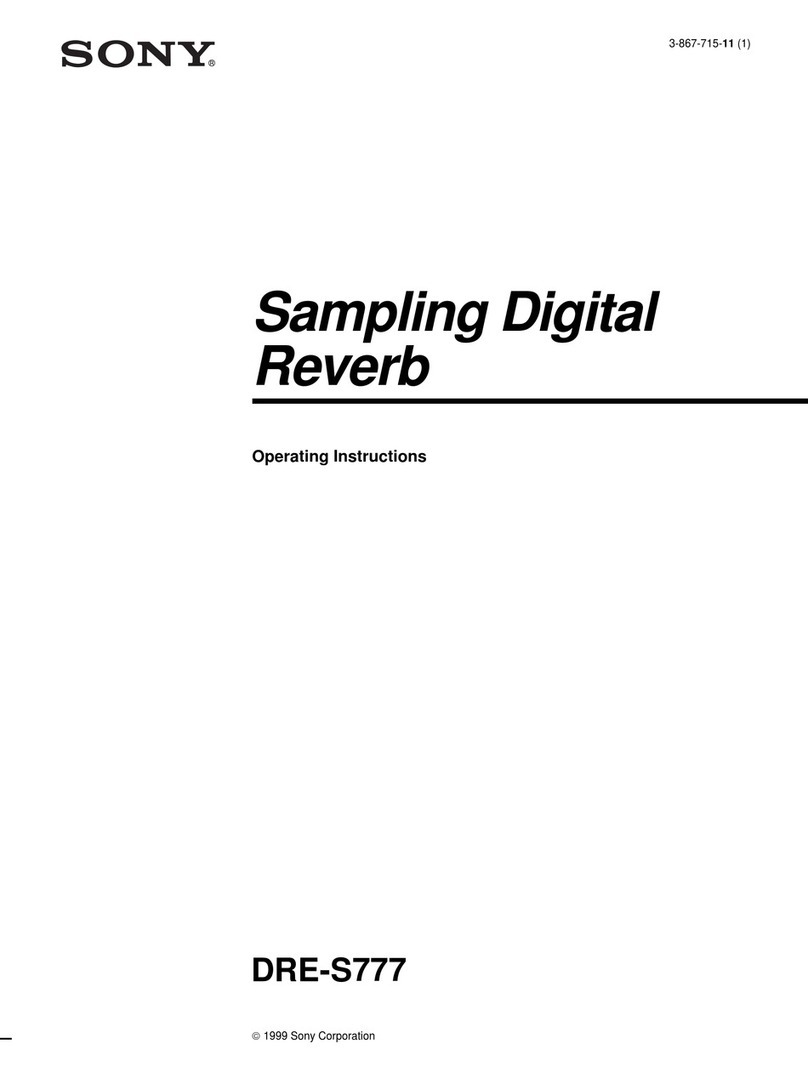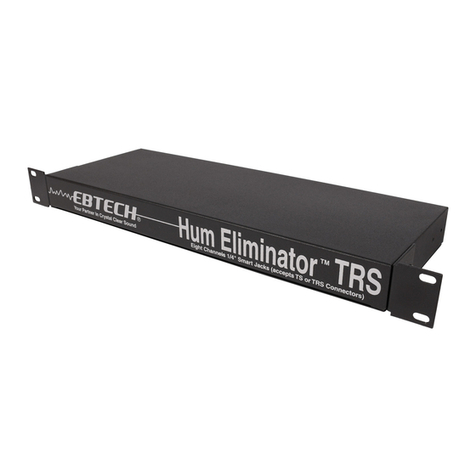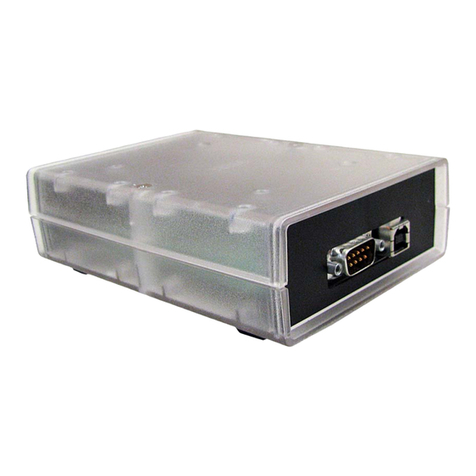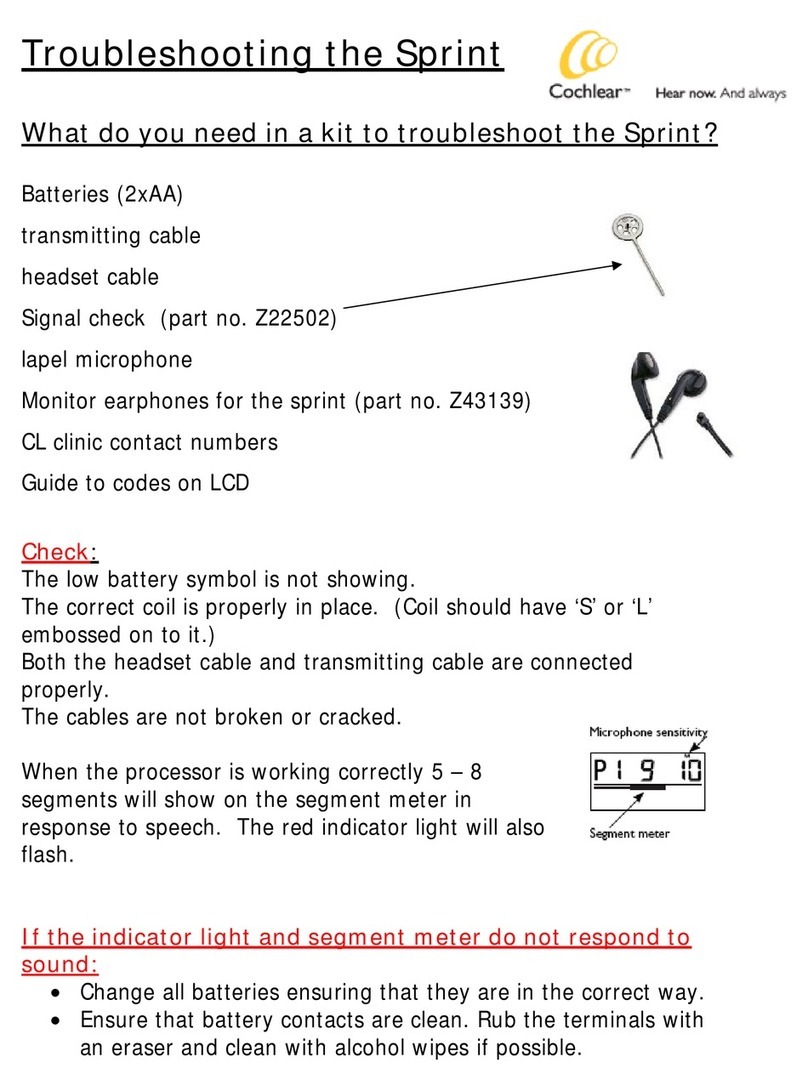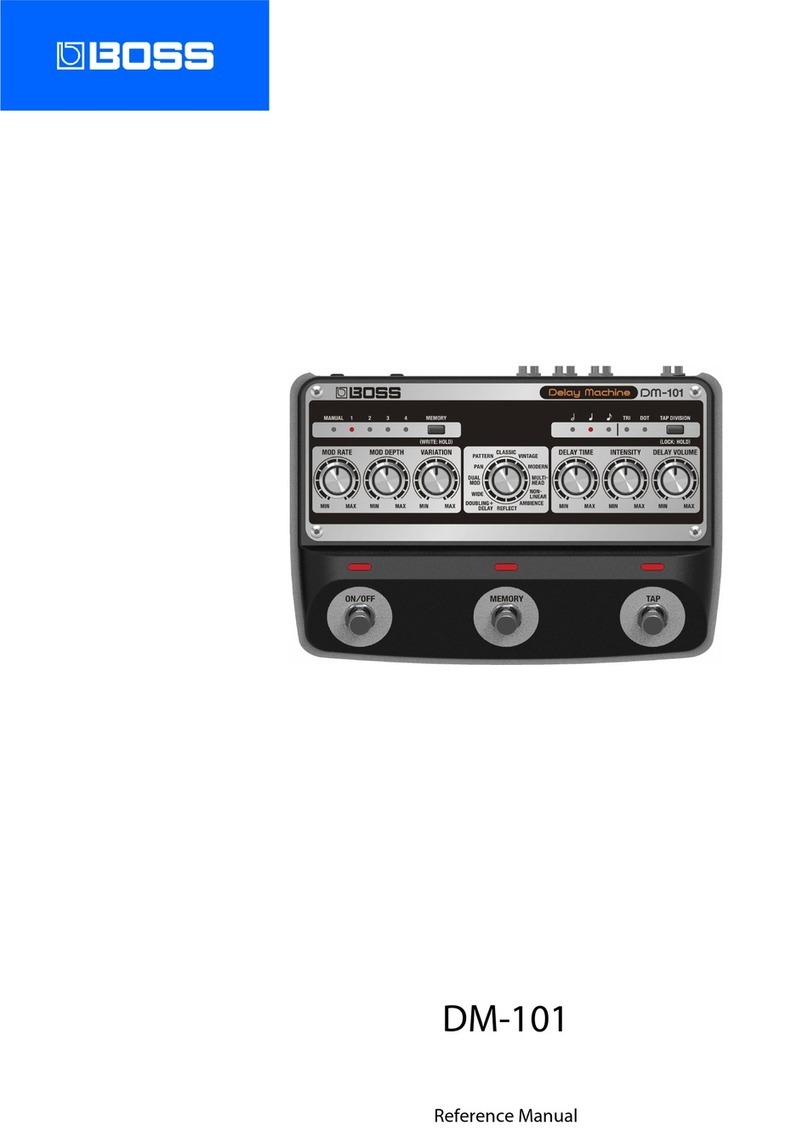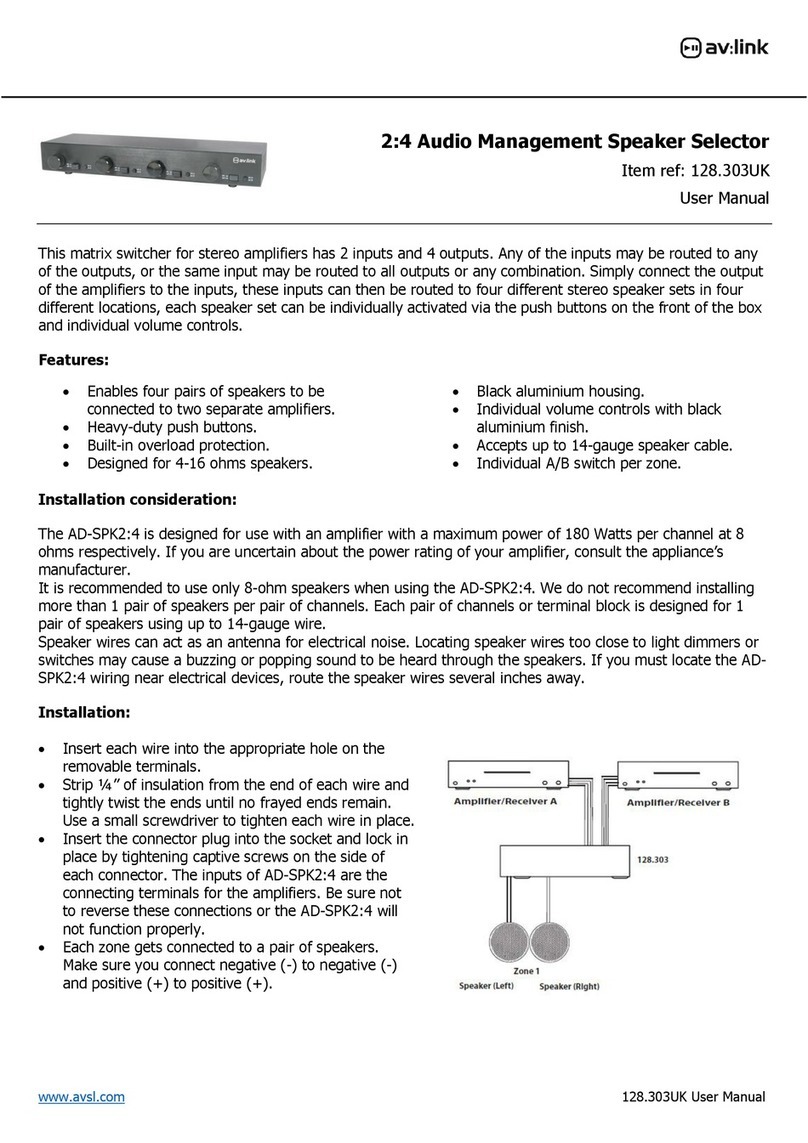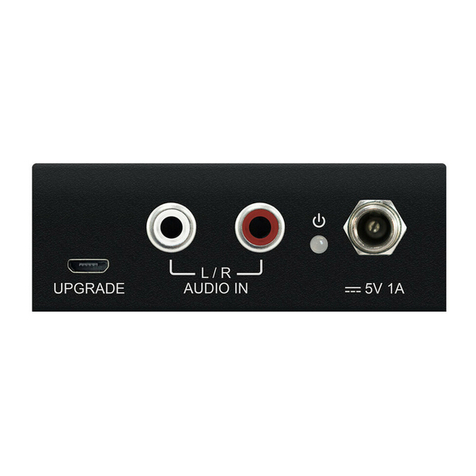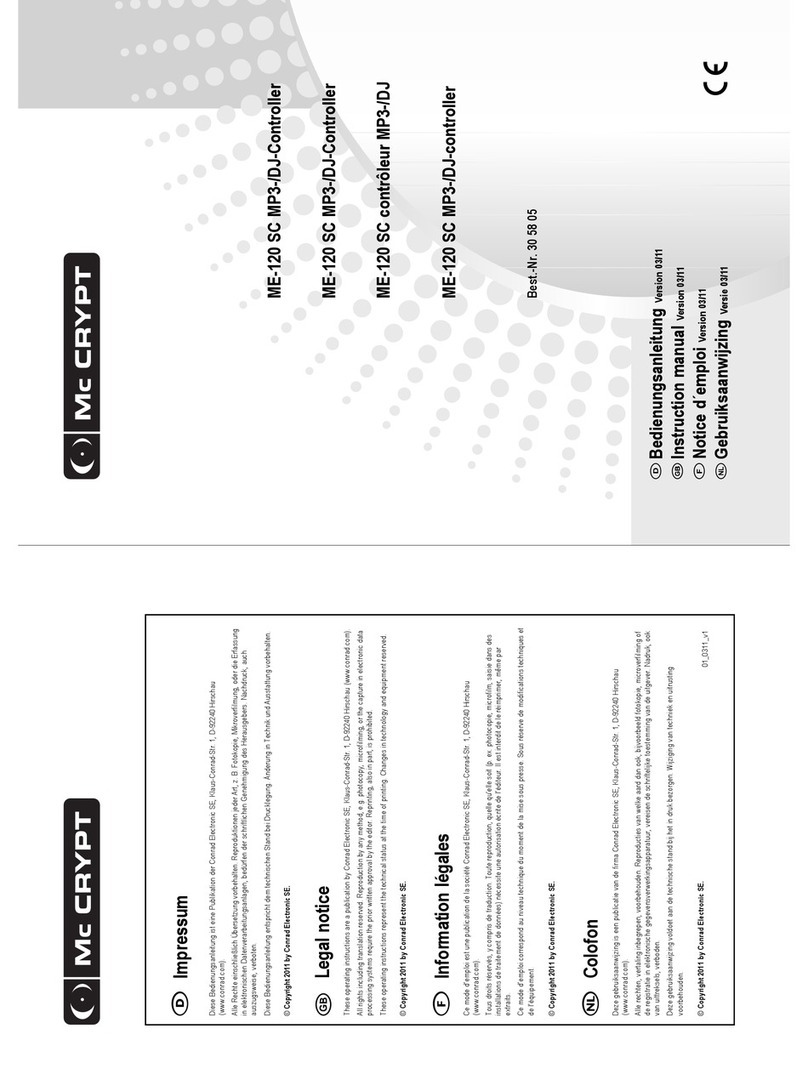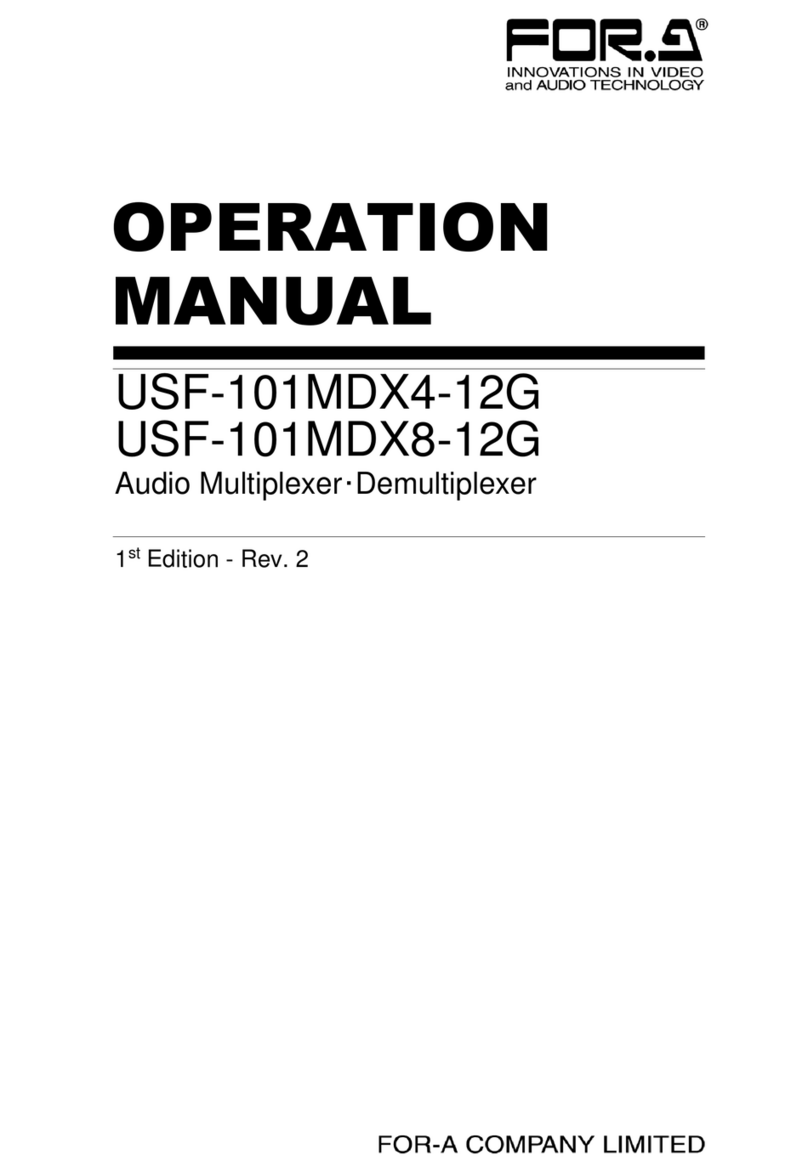
Issue Preliminary 1, July 2021 Model 209 User Guide
Page 6 Studio Technologies, Inc.
MODEL 209
TALENT CONSOLE
supports Power-over-Ethernet (PoE). This connec-
tion provides both Model 209 power and bidirectional
Dante digital audio. Also located on the unit’s back
panel is a 3-pin female XLR connector which al-
lows connection of a dynamic, ribbon, or condenser
microphone. The connected microphone can be a
standalone “stick” type, a microphone associated
with a broadcast headset, or a mic installed as part
of a microphone mounting assembly. An integrated
low-noise P48 phantom power source allows sup-
port for a wide range of professional condenser
microphones.
Stereo or monaural headphones, headsets, or ear-
pieces can be connected by way of the ¼-inch and
3.5 mm 3-conductor jacks that are located on the
Model 209’s front panel. The headphone connections
on the two jacks are connected in parallel (“multed”),
providing the same 2-channel signal to various con-
nected devices. The unit’s two remote control inputs,
accessible using a 3.5 mm 3-conductor jack, allow
one or two contact closures to be connected. These
contact closures can be configured to provide a re-
mote version of the front-panel button function or to
activate the tally output functions. Accessible on a
separate 3.5 mm 3-conductor jack, two tally outputs
provide DC signals to operate associated LED status
indicators. The tally outputs are 12 volts DC and can
provide up to 100 milliamperes of current. These ro-
bust outputs can function independently or as a single
bi-directional current source to ensure compatibility
with a range of microphone on/off status indicators.
The STcontroller software application is used to con-
figure the Model 209’s many operating parameters.
This allows the unit’s performance to be optimized
to meet the needs of specific applications. Separate
STcontroller versions are available, free of charge, to
support personal computers running the WinOS and
macOS operating systems.
The user is presented with a simple set of controls
and indicators. A lighted pushbutton switch is used
to select the status of the microphone signal as it
is sent to the main and talkback Dante transmitter
(output) channels. A rotary level control, with internal
RGB LED lighting, allows on/off control and level
adjustment of the headphone output. An eight-LED
multi-purpose display provides a status indication of
various Model 209 operating characteristics.
Ethernet Data and PoE
The Model 209 connects to a local area network
(LAN) by way of a standard 100 Mb/s twisted-pair
Ethernet interface. Two LEDs display the status of
the network connection. The Model 209’s operating
power is provided by way of the Ethernet interface
using the 802.3af Power-over-Ethernet (PoE) stan-
dard. This allows fast and efficient interconnection
with an associated data network. To support PoE
power management, the Model 209’s PoE interface
reports to the power sourcing equipment (PSE) that
it’s a class 2 (low power) device.
Dante Audio-over-Ethernet
Audio data is sent to and received from the Model
209 using the Dante audio-over-Ethernet media net-
working technology. As a Dante-compliant device,
the Model 209’s two Dante transmitter (output) and
two Dante receiver (input) audio channels can be
routed (subscribed) to other devices using the Dante
Controller software application. The Dante transmitter
and receiver channels are limited to supporting four
Dante flows, two in each direction. The digital audio’s
bit depth is up to 32 with supported sample rates of
48 and 96 kHz. The Model 209 is compatible with
the AES67 interoperability standard. In this mode the
two Dante transmitter (output) channels will function
in multicast; unicast is not supported. In addition, the
unit is compatible with the Dante Domain Manager™
(DDM) software application.
Audio Quality
The Model 209’s audio performance is completely
“pro.” A low-noise, wide dynamic-range microphone
preamplifier ensures that mic input audio quality is
preserved while minimizing the chance of signal over-
load. The output of the microphone preamp is routed
to a high-performance analog-to-digital conversion
(ADC) section. The audio signal, now in the digital
domain, routes through the unit’s microcontroller
integrated circuit and on to the Dante interface sec-
tion where it is packetized and prepared for transport
over Ethernet.
Audio input signals arrive via the Dante receiver
(input) channels and pass into the Model 209’s
microcontroller integrated circuit. Channel routing,
headphone level control, and sidetone creation are
performed within the digital domain. This provides






















